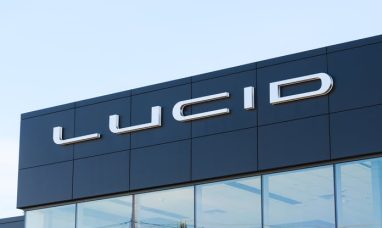Delcath Systems (NASDAQ:DCTH) is a hybrid medical device firm that develops products for the treatment of primary and metastatic liver cancer. Cancers that spread to the liver are relatively prevalent, and many people die not from primary cancer but from cancer that metastasizes to the liver. Delcath is the first minimally invasive liver cancer treatment, with advantages over current treatments such as being administered as an outpatient procedure, being repeatable, and treating the entire organ.
Thesis on Investment
The company has been working for several years to obtain FDA permission, but it is quite likely to do so this summer. The expected clearance will allow Delcath to begin commercial sales in the United States, pursue approval for other tumors, and expand sales in Europe, where it is currently commercially active. Management has begun working with medical centers and has secured funding in preparation for a commercial rollout following FDA approval.
Delcath is concentrating on obtaining FDA clearance for the treatment of metastatic ocular melanoma (mOM) in the United States, with the intention of investigating potential in other types of cancer in the future. In 2012, the business began selling a standalone device called Chemosat in Europe and sought FDA approval for its Meblez Kit, which featured a device and a medication. The FDA advisory group unanimously rejected the Meblez Kit due to a 4% fatality rate and other side effects such as hypertension, renal failure, and bone marrow suppression. A following patient study in 2013 resulted in a 7% mortality rate and a return to the drawing board for Delcath as the company was restructured from the top down.
Delcath has created a new filter system and made adjustments in response to FDA concerns. The HEPZATO® KIT, which consists of administered melphalan hydrochloride through a hepatic delivery system that extracts and purifies a patient’s blood from the liver before returning the blood to the body, is now the lead product.
The HEPZATO KIT produced very positive results in the latest Focus research, exceeding expected parameters and resulting in zero deaths. Based on the better results, Delcath resubmitted its new drug application (NDA) to the FDA for the use of HEPZATO in the treatment of mOM, which has set August 14th as the decision target date under the Prescription Drug User Fee Act (PDUFA).
Unlike other treatments, HEPZATO operates on the entire organ, catching cancer cells that were previously undiscovered. Patients are seen as outpatients following a minimally invasive surgery that lasts only a few hours, as compared to other therapies that are invasive and need hospitalization.
The FDA has given Delcath early access program (EAP) designation in the United States. This designation allows HEPZATO to be used for patients with terminal diseases who have no other options. Delcath has used the EAP to train personnel at medical centers on how to utilize the HEPZATO.
In the United States, the intended market is around 800 ocular metastatic patients per year. Because the market is small, it is possible to concentrate on a few medical centers rather than reaching out to a larger consumer base. Within a few months of FDA approval, management plans to leverage the EAP relationships into an average of four surgeries per month at ten medical centers. A team is being formed to provide educational services in order to create referrals to the partner medical facilities, with the goal of establishing a total of roughly 20 active participating medical centers.
Insurance reimbursement will first shift from a C code to a J code; C codes are used for Medicaid reimbursement of outpatient treatments and are often temporary. Private insurance firms are expected to qualify HEPZATO for non-orally delivered medications, the J code, in accordance with government insurance reimbursement regulations. When compared to reimbursement rates for similar medications, HEPZATO might cost between $100,000 and $800,000 per patient. According to the Delcath investor deck, Kimmtrak commands an $830K payment per patient, despite the fact that it is only available to 45% of the nOM patient population. Delcalth management believes the eye cancer opportunity in the United States is worth $450 million.
Delcath’s orphan medication designation for HEPZATO provides a competitive edge in pursuing chances to expand into other malignancies. This designation enables expense write-offs and other benefits in drug development.
The company has mitigated possible supply chain issues by producing its devices and maintaining an ample supply of active medicine, which is a generic manufactured by numerous manufacturers and in plentiful supply.
Europe
In Europe, Delcath distributes the delivery system as a piece of standalone medical equipment under the Chemosat brand. Chemosat has been certified in accordance with the European Medical Devices Regulation. Based on earlier trial findings, management believed that approval for the combination of medicine and device would be improbable prior to the Focus study. Clinical data was not required to secure approval for the device. All that was required was proof that the gadget transported melphalan to the liver and that it was made under proper conditions.
In Europe, the corporation has encountered unpredictable insurance payouts. Each EU member state has its own FDA-style regulating authority. The Focus trial results give the corporation the possibility to seek regulatory clearance in each of the 30 EU countries in order to create set insurance reimbursement rates.
Competitive Environment
Immunocore Holdings plc (NASDAQ:IMCR) announced FDA approval for KIMMTRAK in January 2022. This medication can treat 45% of nOM patients, whereas HEPZATO can treat 100% of this group. Management believes that both therapies will most certainly be prescribed, with the only uncertainty being in what order.
In a recent meeting with CEO Gerard Michel, he mentioned that various businesses, including Boston Scientific Corporation (NYSE:BSX), Medtronic (NYSE:MDT), and Merit Medical Systems (NASDAQ:MMSI), are developing potentially competing technologies.
Financial Delcath has had multiple capital increases during its three decades of existence, but almost as many reverse stock splits have kept the share count to around 11 million. The market capitalization is $83 million. There is approximately $10 million in debt. The company recently announced a $85 million financing deal that would fund the commercial deployment and propel the company into profitability. There has been no indication of the burn rate required to achieve profit once commercial operations commence in the United States. Currently, the burn rate is around $6 million.
What appeals to me is that revenue of $60 million is adequate to achieve profitability. This is only a small portion of the $450 million TAM for ocular cancer in the United States, not to mention European income. If Delcath can expand its technology into additional tumors, it has the potential to boost its total addressable market.
Risks
The FDA’s approval is critical to the company’s success. There is no certainty that the pending NDA will be successful for the company. If FDA approval is acquired, the corporation must retain it. Delcath will face similar challenges as it strives to expand into other tumors. The same standards must be met in each country where the corporation wants to do business.
Delcath will need to establish insurance reimbursement rates for its gadgets in order for them to be commercially viable. The corporation will also need to form alliances with a number of medical centers.
Many companies are creating items with the potential to compete with Delcath’s technology.
Conclusion
Delcath is nearing the end of the regulatory clearance process for HEPZATO, which will be the first FDA-approved minimally invasive liver cancer treatment. The company has the funds to begin commercial operations in the United States and to progress commercial operations in Europe. The initial collaboration with ten medical centers is already taking shape. Management has highlighted its strategy for expanding the company by adding more participating medical centers and treating more cancers.
Featured Image: Freepik @ ksandrphoto









